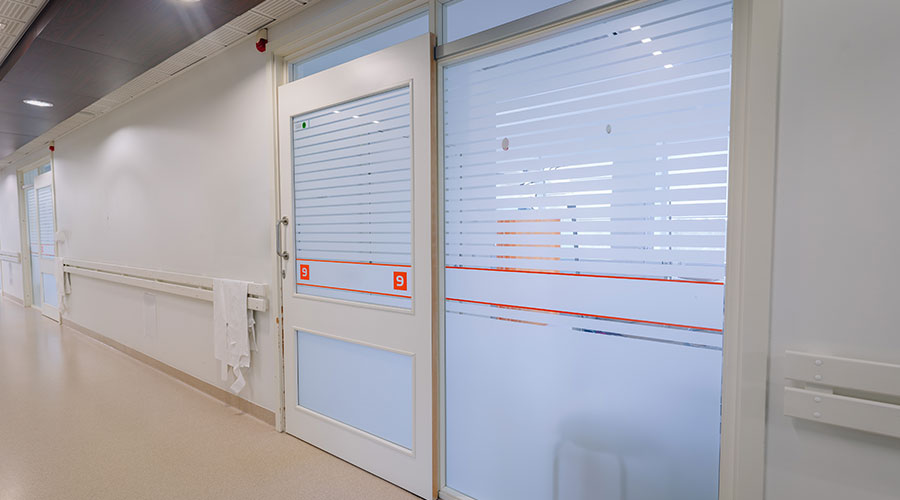Doors play many different roles in healthcare facilities aside from the obvious role as an entrance or exit. They can help with many operations in a facility and keep occupants safe from several types of threats.
Regardless of their mundane nature, doors play a central role in various scenarios within healthcare facilities, and these are three key ones they play.
1: Security and privacy
Doors can aid in many things, including security and privacy. Doors come equipped with hardware such as locks that restrict entrance or egress to and from a space. Locks and hardware also come in a few varieties, such as electronic locks, maglocks and electric strikes.
Security does not end there, though, as alarms and alarm systems can be fitted to doors, providing instant alerts of unauthorized access or security breaches, according to Brian Ha, product manager at STANLEY Access Technologies.
As far as privacy goes, Ha says the available hardware includes items such as privacy blinds, frosted glass, smart glass and soundproofing materials.
“Much of the technology above can be integrated with the overall security system of the facility allowing comprehensive management of threats to both privacy and security within healthcare settings,” says Ha.
2: Emergency preparedness
When an emergency strikes, occupants can be sent into a panic quickly. Many will make a break for the doors to either escape or get into shelter, which can cause jamming at the doors. However, doors do come equipped with features to assist in emergencies, such as panic bars or automated opening.
Specifically, automatic doors can be programmed to open automatically when emergencies are occurring, according to Tysen Gannon, business development and marketing consultant at AD Systems. This helps to ensure the safety of patients and staff during dire situations.
Other features can be added to automatic doors for emergency purposes as well, says Gannon. These include bullet-resistant glass, anti-tailgating, fire doors and breakaway doors.
3: Infection control
Infection control is a major concern in healthcare facilities, as they are breeding grounds for all types of pathogens. Doors, which are frequently used and touched in healthcare facilities, harbor many germs that can be transmitted upon contact. Given this, finding a way around touching doors to use them is critical to controlling infection spread.
Fortunately, automatic doors can come equipped with motion sensors or touchless controls to limit the spread of germs since they eliminate the need to touch handles, according to Ashley Estrada, product manager at Horton Automatics.
In addition, Estrada says automatic doors can be supplied with overhead activation sensors or touchless activation switches, which help keep a barrier between clean and possibly contaminated areas, lessening the chance of spread. Automatic doors can even be outfitted with airtight seals to maintain isolation protocols through diminishing the risk of airborne spread, too.
Jeff Wardon, Jr. is the assistant editor for the facilities market.

 UF Health Hospitals Rely on Green Globes to Realize Their Full Potential
UF Health Hospitals Rely on Green Globes to Realize Their Full Potential How Healthcare Facilities Can Be Truly Disaster-Resilient
How Healthcare Facilities Can Be Truly Disaster-Resilient TriasMD Breaks Ground on DISC Surgery Center for San Fernando Valley
TriasMD Breaks Ground on DISC Surgery Center for San Fernando Valley Bigfork Valley Hospital Falls Victim to Data Breach
Bigfork Valley Hospital Falls Victim to Data Breach AI-Driven Facilities: Strategic Planning and Cost Management
AI-Driven Facilities: Strategic Planning and Cost Management